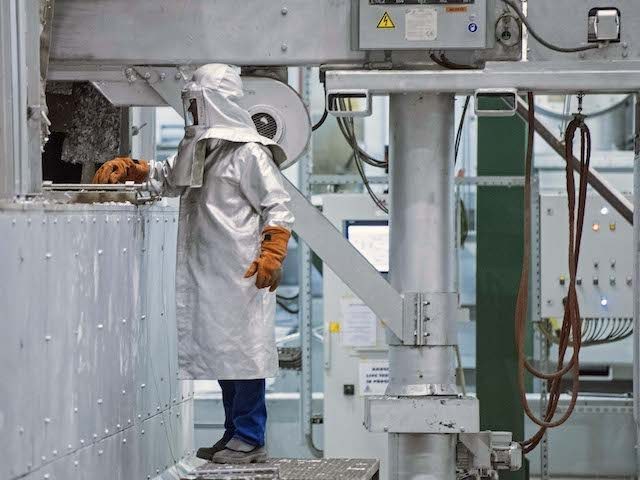President Donald J. Trump finally put the money where his mouth is and the Section 232 tariffs on imported metals went into effect on March 23, 2018. But the global push-back against them managed to reduce some of their bite.
The loudest voices have been Canada, America’s main supplier of steel and aluminum, and the European Union. With a 25 percent duty on steel and ten percent on aluminum, their leaders were not happy about Trump’s plans to put America first and managed to obtain temporary exclusions from the tariff until the first of May.
President Trump should not falter in his resolve after these temporary exemptions lapse. He is not only close to fulfilling one of his biggest campaign promises, but is also sending a momentous signal to the world that the United States will no longer take unfair trade practices lying down.
Much like the E.U., this is not Canada’s first to obtain special treatment. When the Commerce Department first published its assessment that steel and aluminum imports constitute a national security risk under Section 232, Canada immediately implored Washington to be excluded from the impending crackdown. Although Trump seems to have agreed to Ottawa’s demands, the exemption was granted with a key condition: negotiating a fairer NAFTA.
Even so, Canada does not deserve to be exempted. They are part of the reason why the American steel and aluminum industries are in such dire straits. The country has been subsidizing its aluminum smelters for years, allowing it to undermine the U.S. industry through cheap imports. In one instance, the Province of Quebec provided its aluminum industry “an interest-free $400-million loan, $112-million in tax benefits, an additional block of electricity at below market prices and the renewal of hydro rights to produce its own power until 2058.”
For tariffs to be effective, they need to be equally applied across the board, without exemptions, to foster growth in domestic industries. If Canada and other countries are excluded, the tariff will simply boost the fortunes of their own aluminum industries, which will effectively receive privileged access to the U.S. market. Without question, this will happen at the American industry’s expense.
In other words, if tariffs are not universally applied to all countries, substantial benefits of the new tariff will accrue to the smelters in the exempted countries. U.S. consumers would effectively be subsidizing foreign production rather than supporting the domestic industry, thereby undermining the entire purpose of these trade protections.
All that would perpetuate the underlying disadvantageous dynamics that left the American industry struggling in the first place. Tariffs are corrective measures regarding the problem of foreign subsidies. They seek to boost domestic industries and encourage the consumption of American-made steel and aluminum. They promote U.S. products by stimulating demand for U.S. metals, which in turn is predicted to bring back blue-collar union jobs in the steel and aluminum industries. As a net effect, the internal economy ends up significantly reinforced.
Yet amid all this noise about trade wars and economic downturn if exemptions are lifted on trade partners, the fundamental facts underpinning the White House’s motivations for tariffs are deliberately drowned out. Where was the New York Times’s report on Canada’s predatory trade practices? Or the Washington Post’s deep-dive into Germany’s multi-billion dollar energy subsidies to its heavy industry and steel mills that destroyed the U.K.’s homegrown industry?
Criticizing the case for tariffs shows a clear lack of understanding about the effects of trade protection and international trade dynamics.
Amid the barrage of apocalyptic warnings, possible negative effects of tariffs are being widely overstated. As foreign governments pour millions into subsidizing their metals producers, they distort market forces and are thus able to dump their products into the U.S. market. China’s state-sponsored enterprises producing massive amounts of overcapacity are a prime example of how supposedly “free” trade is undermined from the start.
The E.U. barked the loudest when it promptly threatened to impose retaliatory protections on American imports to the bloc. But what E.U. officials in their hubris seem to forget is that the U.S. has been Europe’s largest export partner for years, particularly for cars. Washington’s threat of slapping tariffs on European cars would critically hurt the economy of the E.U.’s powerhouse, Germany. Therefore, despite all the saber rattling, it is unlikely that Brussels would want to seriously threaten this relationship.
While the Chamber of Commerce and the establishment of the GOP may be opposing the presidential policy move, Trump’s tariffs earned applause from some traditionally left leaning union members in a rare display of consensus with the Oval Office. But never mind the naysayers: protecting the domestic metals industry is a tradition as American as apple pie. The rise of the United States to a global power was largely built on its metals industry, and consequently, protecting it and its workers has always been a priority.
Yet Trump must be careful not to stray from his agenda of putting American workers first. If he buckles and extends the exemptions past May 1, he risks all the benefits the U.S. stand to gain.

COMMENTS
Please let us know if you're having issues with commenting.